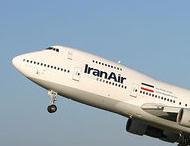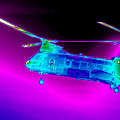 The Bureau of Industry and Security (“BIS”) issued a non-standard 180-day denial order against various entities, including Iran Air and Ankair, in connection with what BIS believes to be the imminent sale of a Boeing 747 from Ankair to Iran Air. The non-standard denial order provides, in part, that no person may take any action to assist Iran Air in the acquisition of the aircraft in question or to service that aircraft. The denial order also prohibits Ankair from engaging in any transaction related to the aircraft.
The Bureau of Industry and Security (“BIS”) issued a non-standard 180-day denial order against various entities, including Iran Air and Ankair, in connection with what BIS believes to be the imminent sale of a Boeing 747 from Ankair to Iran Air. The non-standard denial order provides, in part, that no person may take any action to assist Iran Air in the acquisition of the aircraft in question or to service that aircraft. The denial order also prohibits Ankair from engaging in any transaction related to the aircraft.
Here’s a picture of the jet in question, which was once used by Martinair Cargo, parked at Schiphol in May 2008 prior to its delivery to ACT Airlines, a Turkish cargo airline based in Istanbul. How the 747 then wound up in the hands of Ankair, a charter passenger airline, is unclear.
But the involvement of Ankair in this transaction necessitates a completely off-topic digression into the history of Ankair and the story of its misconceived logo. Ankair was once World Focus Airways. An MD-83 which World Focus leased to and operated for AtlasJet crashed in November 2007 on its approach to an airport in Isparta, Turkey, killing all 57 people on board.
Because of the negative publicity generated by the crash, the company sought to re-brand itself as Ankair, short for Anka Air. Anka derives from the Turkish word for phoenix – anka kuÅŸu. As if the image of resurrection from the ashes wasn’t sufficiently unfortunate in light of the crash that led to the re-branding, the airline’s logo (pictured below) has been the object of mirth given the striking similarity between the phoenix that precedes Ankair and the letter “W.”

If this little bit of history piques your interest in Ankair, rest assured that the non-standard denial order wouldn’t prohibit you from flying on one of Ankair’s charter flights.

 Posted by
Posted by  Category:
Category: 

 The Bureau of Industry and Security (“BIS”) released yesterday a
The Bureau of Industry and Security (“BIS”) released yesterday a  A recent
A recent  While everyone in the export community is enjoying a little schadenfreude over the Department of Defense’s
While everyone in the export community is enjoying a little schadenfreude over the Department of Defense’s  The Bureau of Industry and Security (“BIS”) issued a
The Bureau of Industry and Security (“BIS”) issued a 

